Thank you for being a steward of future forests by joining our tree seed collection efforts to support the Maryland Forest Service’s John S. Ayton State Forest Tree Nursery in Preston, Maryland. Be on the lookout every late summer/fall for any of the following species listed in Table 1 (reverse), and reach out if there are others you’d like to collect!
-
Materials
Burlap bags or paper lawn/leaf bags, gloves, tarp, rake, and enthusiasm! Remember, look out for yourself when collecting seed. Pack food, water, sunblock, bug spray, and other essentials. Wear long sleeves and pants when collecting seed to minimize the risk of ticks and protect from briars.
-
Collection
Get seed as soon as it is mature and be sure to inspect! No cracks, dried-out looking seed or seed with holes from wildlife damage such as insects. When tree seed falls from a branch, most of the time it has ripened, and it is best to collect soon after that. Seed will over-ripen and not germinate well or be susceptible to insect attack if fruits or pods stay on the tree or ground too long. See Table 1 for more details. ALWAYS LEAVE SOME BEHIND FOR WILDLIFE!
-
Storage
All tree seeds need to be stored in a cool, dry place out of direct sunlight in a paper or burlap bag. Do not use plastic bags to collect seed as it can over-ripen and ferment. We do not recommend storing seed inside your home, as it can bring in bugs. Keep species separated…DO NOT MIX SPECIES IN BAG!! Label all bags.
-
Delivery
It’s best to collect and deliver seed within the same week. If you cannot deliver the seed yourself, contact the MD Forest Service at
[email protected]. If delivering to a drop-off location, please email the MD Forest Service before dropping off bagged seed to give advance notification.
 Additional Notes
Additional Notes
- ACORN WEEVILS:
Weevil eggs are laid in acorns in midsummer, and larvae feed inside the nut until fall. This damages the acorn, and it will not grow into a tree. Weevils leave a tiny hole in acorns. Keep a lookout for these! (photo right)
- A reminder to all: Please label your bags and put leaf of species collected in the bag with seed if possible.
Species Name
Eastern Redbud;
Cercis canadensis
Identification


Collection Tips
Collect Redbud seeds in fall when pods turn brown.
Species Name
Flowering Dogwood;
Cornus florida
Identification
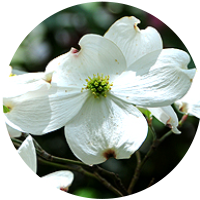
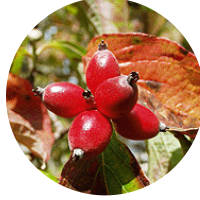
Collection Tips
Collect Flowering Dogwood fruit in the fall, once the fruit skin is red and it begins to soften.
Species Name
Chestnut Oak;
Quercus montana
Identification


Collection Tips
Collect Chestnut Oaks in early fall, preferably within 3 days of falling from the tree. If it has a sprout, hole or crack, then throw it back!
Species Name
White Oak;
Quercus alba
Identification
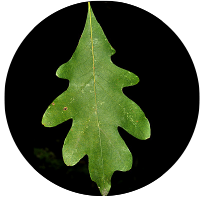

Collection Tips
Collect White Oak acorns in early fall when they are green or just turning brown, since this species germinates almost immediately. If it has a sprout, hole or crack, then throw it back!
Species Name
Black Chokeberry;
Aronia melanocarpa
Identification

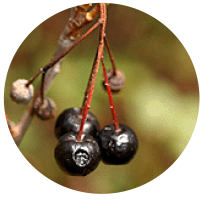
Collection Tips
Collect in late August typically when fruit is black.
Species Name
Wild American Plum;
Prunus americana
Identification


Collection Tips
Collect Wild American Plum fruits in late summer to late fall.
Species Name
Spicebush;
Lindera benzoin
Identification

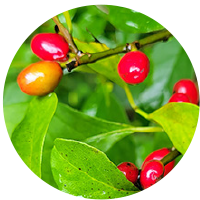
Collection Tips
Collect in late summer into fall when fruit has turned red.
Species Name
Witch Hazel;
Hamamelis virginiana
Identification


Collection Tips
Collect in fall before brown seed capsules begin to open and expel seed.
ALWAYS REMEMBER TO LEAVE
SOME FRUITS AND SEEDS BEHIND FOR WILDLIFE!

